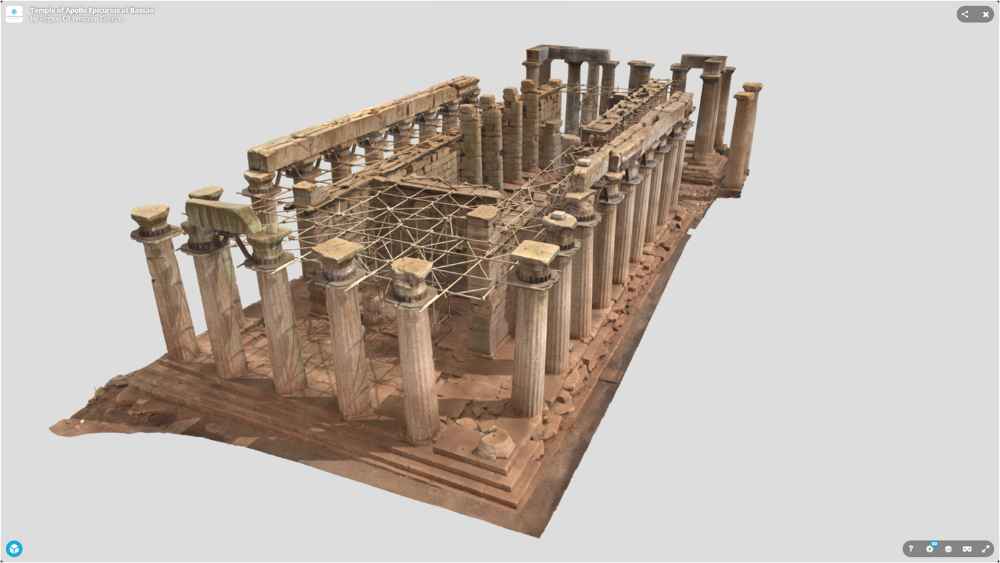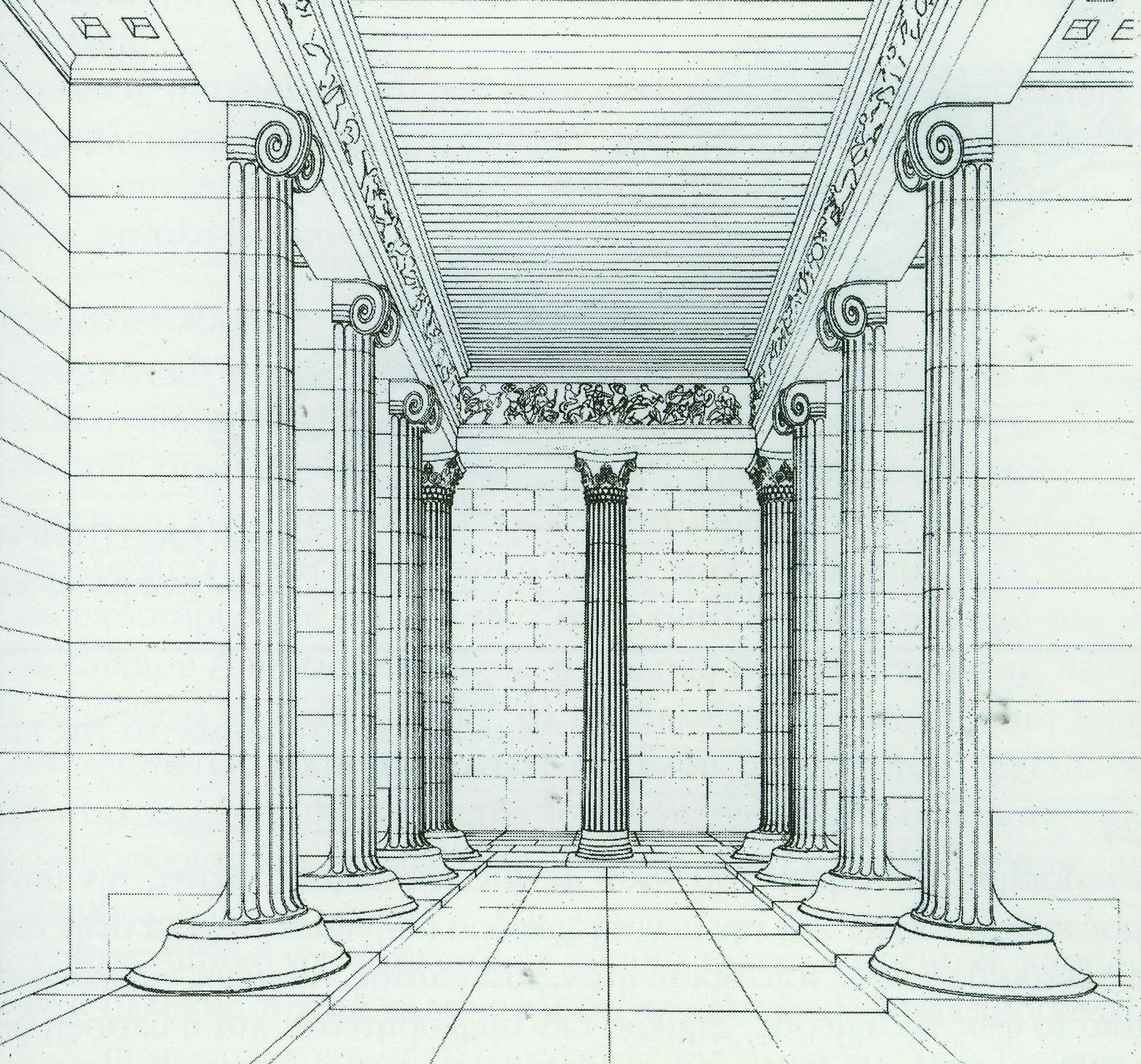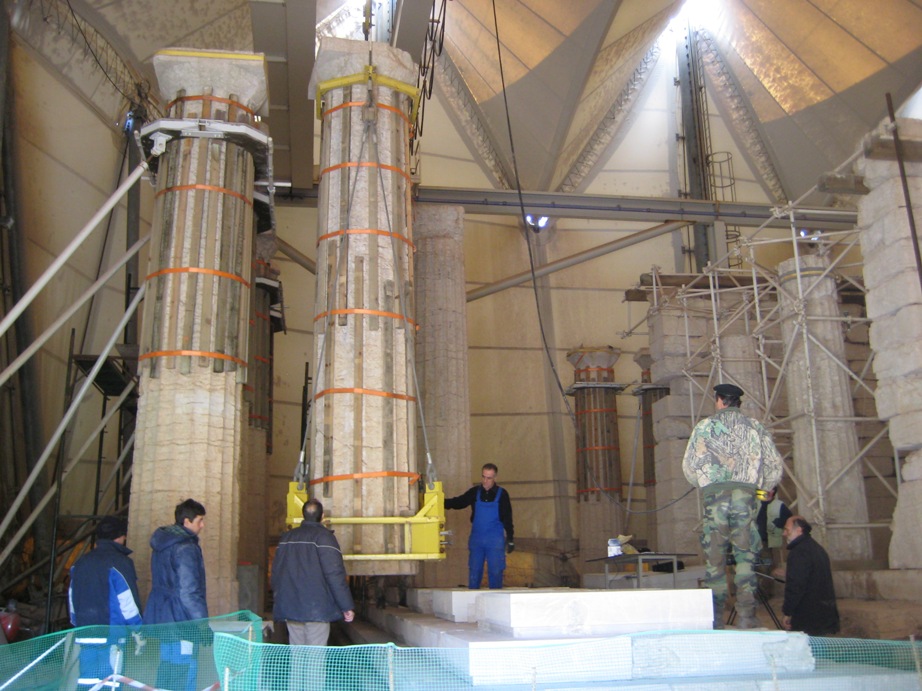“..ναῶν δὲ ὅσοι Πελοποννησίοις εἰσί, μετά γε τὸν ἐν Τεγέᾳ προτιμῷτο οὗτος ἂν τοῦ λίθου τε ἐς κάλλος καὶ τῆς ἁρμονίας ἕνεκα…”
“Of all the temples of the Peloponnese, after the temple of Tegea, this one could take the first place for the beauty of the marble and the harmonious ensemble“
Pausanias, Description of Greece, VIII 41, 8
At a glance
Built at an altitude of 1130 m., in the mountainous, lonely Arcadian landscape of Basson Figaleia, in today’s Ilia, the Temple of Apollo Epicurius is one of the best preserved temples of the classical era, with conservative and at the same time innovative features and is considered a milestone in history of ancient Greek architecture.
Iktinos
The famous Athenian architect Iktinos built the temple dedicated mainly to Apollo, god of Light and Reason during the years of the Peloponnesian War (420 – 400 BC).
Figalia
It was a votive offering by the inhabitants of the Arcadian city of Figalia. The remains of the city are located at a distance of approximately 13 kilometres southwest of Bassae.
UNESCO
It was the first of the Greek monuments to be included in the list of UNESCO World Heritage Sites in 1986.
Bassae
The name of the site means “wooded gorges”. The area belongs to Mount Kotilio, which in turn is part of the mountainous mass of the mythical Lycaeon Mount of Arcadia with its many ancient cults.
Corinthian Style
In the monument, the three ancient architectural styles—the Doric, the Ionic, and the Corinthian—are masterfully combined. The Corintian Style makes its appearance for the first time in the history of architecture
Pausanias
We owe the unique testimony and description of the great temple of Bassae to Pausanias, the great traveler and writer of the 2nd century AD.
“….And suddenly, at a turn of the mountain, the famous temple of Epicurious Apollo rises unexpectedly in front of him. Directly facing the cliff, shaped as it is with the same stones of the mountain, you feel the deep response of the landscape and the temple. Like a piece of the mountain, stone from its stone, the temple seems inseparably wedged between the rocks, a rock too, but a rock over which the spirit passed. The pillars of the temple, carved and placed in this way, express the essence of all this mountainous austerity and desolation. You are confident that it is the head of the landscape, of the sacred area, where its mind is kept, vigil, and protected. And here the ancient art, continuing and perfectly expressing the landscape, does not surprise you. Agility, calmness, from a human path takes you, without panting, to the top.”

Nikos Kazantzakis
Author


Temple of Epicurius Apollo
Features
Orientation
The classical temple has been founded on the natural rock, on a specially shaped plateau. It does not have the usual E-W orientation, but N-S, perhaps for cultic reasons connected with the Arcadian religious tradition, since other temples in the area show the same orientation.
Construction material
The main structural material of the temple is the local layered, gray limestone. Marble was also used in the sculptural decoration.
Conservatism
Its exaggerated longitudinal axis with 15 columns on the long sides and 6 on the narrow ones, characterizes the temples of the Archaic era, instead of the 13×6 rule that had prevailed at the time of its construction.
Temple of Epicurius Apollo
Sculptural decoration
Doric frieze
The temple had an exterior Doric frieze with undecorated metopes and triglyphs, while only the interior metopes of the narrow sides were decorated in relief. The six metopes of the pronaus depicted the return of Apollo to Olympus from the Hyperborean countries, and the abduction of the daughters of the Messinian king Leucippus by the Dioscuri. It is not certain that the gables had sculptural decoration.
Ionic frieze
A prominent decorative element of the temple was the marble Ionic frieze, which was created by the famous sculptor Paionios and surrounded the interior of the nave, above the Ionic semi-columns. The frieze had a total length of 31 meters and consisted of 23 marble slabs. Twelve of them depict an Amazon battle and the remaining eleven a Centaur battle.
The elongated nave is divided into two parts. In the main nave, a unique element is the presence on the two walls of two rows with 5 Ionic semi-columns, which adjoin the wall of the nave. The oldest known example of a Corinthian column capital is placed among the southernmost Ionic, or according to other scholars also Corinthian semi-columns.


“…. The Temple of Apollo at Bassai, with its grandeur and its (mysterious) complexity, seems the only surviving witness to ancient southwest Arcadia at its peak. Those who have visited the area, however, know that there is another ‘silent’ but equally powerful witness: its natural beauty.
This land, at the meeting-point of the borders of the modern prefectures of Arcadia, Ilia and Messenia, is one of the few areas of the Peloponnese to remain essentially untouched by modern rural development and to escape being built-up.
Its natural beauty, with its constantly shifting landscape, light and colours usually entrances visitors, making those with a knowledge of archaeology wonder in what dense oak forest the ancient goat-footed god will appear, or in what spring they might glimpse nymphs bathing…”*

Restoration work
The damage that the Bassae monument bears, is the result of many factors, such as the various harmful human interventions, the failure of the foundation and the consequent subsidence and deformations which caused the great deviations of the columns from the vertical axis and the deformations of the stones of the architrave. Furthermore, the adverse weather conditions and earthquakes contributed in the ware .


